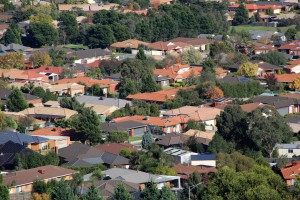Two minute read
Here are some new things to do with our population.
Population update
Following the release of Census data today, population estimates for the last five years can be updated. 
The population estimate for Australia has been increased 86,000.
The biggest upward revision was for Victoria (+111,000), followed by New South Wales (+15,000), Queensland and the ACT (both +7,000); South Australia (+5,000).
There was no change to population estimates for the Northern Territory and downward revisions for Tasmania (-1,000) and Western Australia (-58,000).
So, as at December 2016:
| State/Territory | Total Population | Annual growth |
| New South Wales | 7,798,000 | 116,400 |
| Victoria | 6,244,000 | 147,600 |
| Queensland | 4,884,000 | 70,500 |
| South Australia | 1,717,000 | 10,300 |
| Western Australia | 2,568,000 | 16,800 |
| Tasmania | 519,000 | 3,000 |
| Northern Territory | 245,000 | 600 |
| ACT | 406,000 | 6,800 |
| Australia | 24,381,000 | 372,000 |
Some Census highlights
- On average across Australia, the median age of Aussies was 38; there were 0.9 people per bedroom; there were 2.64 people per dwelling (up from 2.63 people in 2011 and 2.61 people in 2006).
- Between 2011 and 2016, the median household income rose by 16% (or 3.2% per annum) to $74,500 per annum; with the family income up by 17% (3.4% per annum) to $90,000 per annum. The median rent rose 17.5% to be $335 a week and the median mortgage fell by 2.5% to be $1,755 a month.
- The proportion of families living in detached houses fell from 74% in 2011 to 72% in 2016; those in apartments fell from 14.3% to 13.7%; but those in semi-detached homes rose from 9.9% to 12.7%.
- The proportion of families renting is now broadly equal to those owning homes outright. The proportion of households who own their homes outright is near a record low.
Some comments
- Goes to prove what we have been saying for yonks – there is a mismatch between recent housing supply (last five years or so) and underlying local demand.

- One place that is getting it right is Victoria. Hence, its upward population recalculation and now high level of annual population growth. It’s often a catch 22: more affordable housing choice means more demand, which it turn, drives more local employment.
- As Brendan Crotty, from Australand, often used to say, one new job = one new dwelling required. A good rule of thumb.
- With wage growth now slowing and more of us renting and/or having a mortgage, any change in costs, including higher interest rates, will likely to have an increasing impact on housing demand.
- Less new homes are needed, plus of course, different ones than, say, high-rise apartments, given the rise in average household size. It more like a crowded house, rather than an empty one.
We have secured 100 copies of the latest edition of Michael Matusik’s Capital Cities Market Outlook Report” for just $99 plus GST.
This is a 33% saving for readers of Property Update!
Please hurry, as we have been allocated limited numbers of these reports at this price. Please click here now to secure your report and use the code: YARDNEY2017

No comments:
Post a Comment